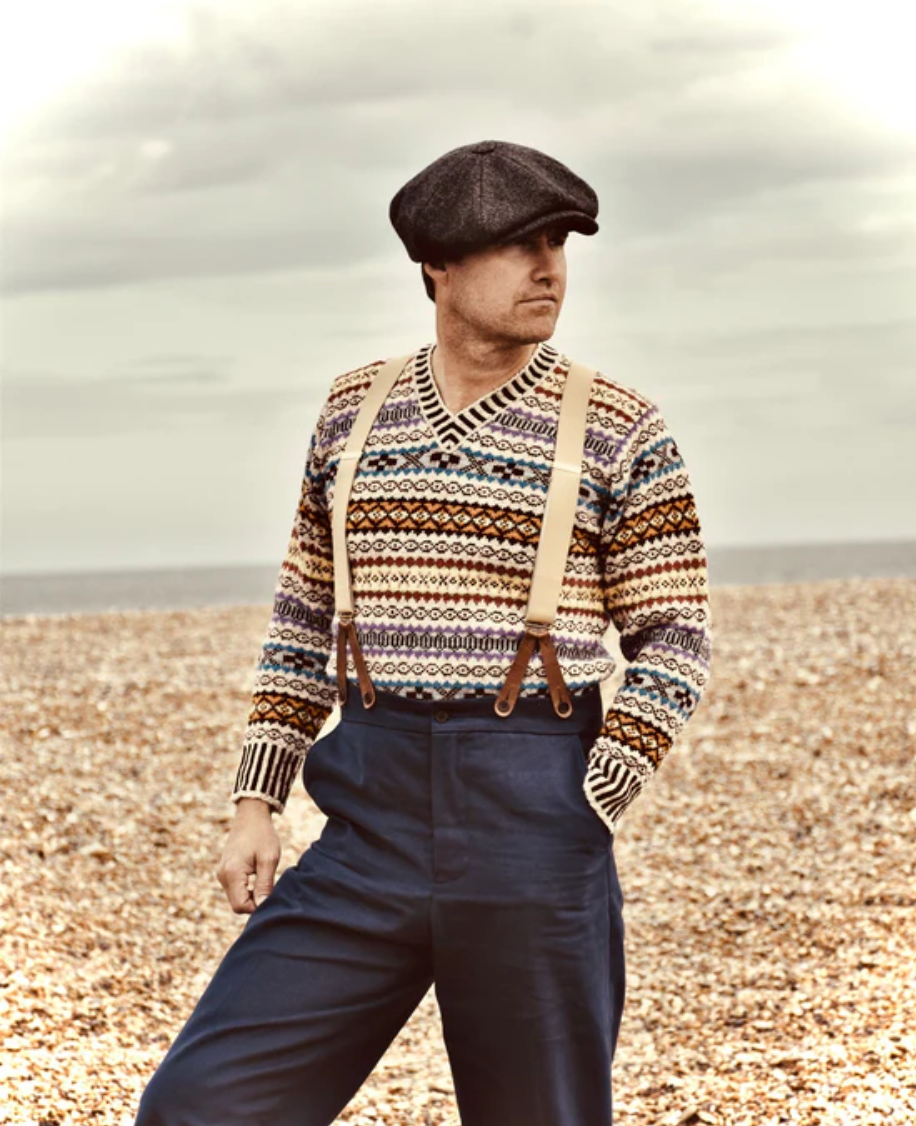How Stitches Keep a Record
What patterns still hold, even as photos take over
I have been sorting through old photos lately as storage space in our home has reached a point where opening a box feels like a minor act of bravery. The original goal was practical; we need to clear things out. But once you start picking things up, you end up looking at your own history whether you meant to or not.
It is strange to think about how few photos we once took. Film made you choose. Now we take hundreds digitally without thinking; modern day documentation of time and place. Entire histories sit in our phones or live in clouds, archived automatically with no need for shoeboxes. Yet the old photos in those boxes feel heavy. They were saved on purpose, even when they were out of focus or accidental.
I am sentimental, but with purpose. A few photos still catch me and I keep those ones without question. But many others do not ask much of me, which makes it easy to look, remember, and let them go.
Many photos I have been seeing stop me in my tracks because they show versions of me I forget existed. The hair, the friendships, the places, and the history. There is something entertaining about seeing little me and remembering the awkwardness or confidence with which I moved through phases of my life.
Yet other photos are simply baffling. Entire strips of negatives where every frame is blurry, crooked, or taken randomly. A few are so bad that I question why anyone bothered printing them. It is a good reminder that not everything preserved is worth keeping. For a long time I assumed that getting rid of old photos meant something was missing in me, some required ability to feel nostalgic, like an expected sentimentality. We are told to keep them because they will matter someday.
While sorting, I began to think about how people recorded their lives before cameras existed. There are numerous ways this was done in the past, but the one that fascinated me was how knitted garments played just that role. A sweater could show where someone lived, who taught them, and what kind of life shaped their days. Patterns and motifs carried information that photographs now try to hold.
In the Shetland Islands, for example, Fair Isle patterns tell a story. Some motifs were more common in specific villages. Their graphic patterns tell us about the environment, culture, and community, using colour and motif to represent local landscape, religious beliefs, and social connections.
The Aran cable knit sweater originated in Ireland around the turn of the 20th century, evolving to provide warmth and protection for fishermen. But beyond practicality, its stitches became symbols of seafaring life; the Cable stitch representing ropes and luck, the Diamond symbolizing nets and wealth, and the Honeycomb referencing abundance, and zig-zags depicted cliff paths and married life.
In Latvia, mittens were created for weddings and seasonal rituals, with patterns reflecting regional identities and cultural history. Colours and motifs were rich in symbolism, drawing from mythology, nature, and daily life to convey wishes for prosperity, protection, fertility, and good fortune.
Further south in the Andean highlands, alpaca fibre suited the cold, and knitted chullo hat signalled the village someone belonged to. Some patterns even indicated age or marital status. Andean knitting and weaving traditions use specific styles to represent the natural environment, cosmology, and to identify the specific community or geographic region the wearer or textile comes from.
Even the fibre itself acted as a kind of signature. Andean alpaca reflected altitude and landscape. Shetland wool offered soft warmth in wind. Icelandic wool resisted wet weather. Russian goat fibre created lace unique to its region. Before yarn labels existed, the material alone could reveal where a piece had come from.
Going through these photos has made me notice how much we now rely on cameras to keep track of our lives, a job that knitting once did without any effort. A pattern showed where someone lived or who taught them. It recorded climate and habit simply because that was the only way to make something useful. But I doubt very much these items were stored away the same way that we now like to document our past. Seeing that difference beside my own boxes of prints has helped me understand what feels worth keeping. I save the few photos that still say something to me, and the rest can go. I am not losing anything by doing that. The memories show up on their own, without needing proof on paper.
I smile thinking about how my knitting works in a similar way. Each piece reminds me of where I was, who I was with, and what I was doing at the time. That seems like a perfectly good record on its own.




